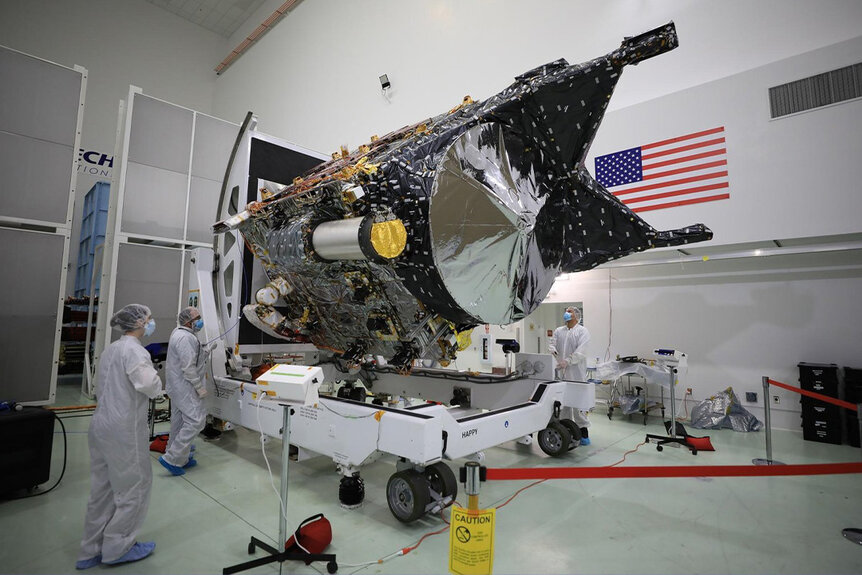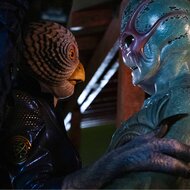Planetary Protection Protocols Hope to Prevent Extraterrestrial Contamination
No one wants to come down with a case of the Martian flu.

More than 50 years after Neil Armstrong first walked on the Moon, space exploration has become almost commonplace. The record for most space launches in a single year has been broken every year for the last four years. With more than 240 launches in 2024, days with rocket launches were more common than days without. With so much interplanetary travel happening, scientists and space agencies have spent a lot of time thinking about preventing contamination.
Before any spacecraft gets launched, it goes through a Planetary Protection Plan, which can vary in its complexity based on the nature of the mission. A spacecraft headed for deep space has a different level of risk than one headed for the surface of a planet. The goal of planetary protection is two-fold, to protect Earth from extraterrestrial contamination and to protect the rest of the cosmos from Earthly contamination.
Planetary protection isn’t just good practice, it’s a legal requirement of all space agencies, with guidelines defined by the Committee on Space Research (COSPAR) in compliance with the United Nations Outer Space Treaty. NASA’s Office of Planetary Protection works to ensure compliance through strict planetary protection protocols to prevent contamination of other worlds (forward contamination) or contamination of the Earth or Moon (backward contamination).
How planetary protection protocols protect space from us
Preventing the contamination of other worlds might seem like a smaller concern than the protection of our own planet, but it’s hugely important. Sterile spacecrafts are particularly important in the search for extraterrestrial life. If we ever did detect signs of life on Mars, for instance, we’d want to be certain we weren’t detecting something we brought along with us by accident. Moreover, if we do find life elsewhere, it’s crucial that we don’t mess with their ecosystem by mistake, through the introduction of Earthly biology.
To protect against contamination, scientists and engineers work tirelessly to keep a spacecraft sterile during the building and testing phases. Spacecraft are maintained in clean room environments to minimize the presence of microbes, dust, and moisture. Throughout the construction and testing process, spacecrafts are cleaned using a variety of methods. Sometimes, they are cleaned with solvents like wipes, rinses, or sprays. Other times they are cleaned through Vapor Hydrogen Peroxide (VHP) or Heat Microbial Reduction (HMR), a process that involves baking a spacecraft at between 230 and 260 Fahrenheit for hours or days.
Meanwhile, scientists measure the bioburden (the number of microbes in or on an object) using cotton swabs or wipes. About 10% of the surface of any spacecraft is tested, to gain a representative sample of what’s on its surface. Those samples are collected and cultured for 72 hours and checked at 24 hour intervals to see if anything grows. Only once a spacecraft meets its planetary protection requirements is it allowed to leave the planet.
How planetary protection protocols protect the Earth from space
Most of our planetary protection protocols are designed to protect alien life, but we already know that there’s life here, and we don’t want to muck it up by accidentally unleashing a Martian. The 2017 space-based horror film Life (streaming now on Peacock) imagined a grisly end for humanity (and the rest of the life on our planet) if our planetary protection protocols failed.
Jake Gyllenhaal, Rebecca Ferguson, and Ryan Reynolds play three astronauts investigating a newly discovered Martian organism aboard the International Space Station (ISS). What begins as a fight for personal survival becomes a battle for the continued survival of all life on our planet, when the microbe turns out to be more adaptable than we realized. Despite their best efforts, the organism escapes into Earth’s ecosystem. Here’s how real-world scientists are making sure that doesn’t happen.
NASA’s Perseverance rover has been plodding along Jezero crater for years, looking for signs that life once existed on Mars. Along the way, it’s been collecting samples of the regolith (Martian dirt) and the air, for eventual return to Earth. When and if the Mars Sample Return mission happens, it will be the first time we’ve intentionally collected a sample with potential life in it and brought it back home. It’s not a decision anyone is taking lightly.
To be clear, the risk of contamination from Mars is already considered very low. Rocks from Mars have been ejected through impact events and landed on Earth before, without any dire consequences. In addition, the samples are being collected from the first few inches of Martian dirt, which has been exposed to extreme temperatures, arid conditions, and intense solar radiation sufficient to sterilize anything that was once living there. Still, no one is taking any chances.
All of the samples will remain forever contained, using a container-in-a-container approach, the goal of which is to “break the chain” of contact between Mars and Earth. Samples have been collected already and will eventually be placed inside the Orbiting Samples (OS) container. The OS will then be launched off Mars and picked up by the Capture, Containment, and Return System (CCRS) on the European Space Agency’s Earth Return Orbiter.
Once onboard, the OS will be sealed inside a containment vessel and heat sterilized. The now-cleaned capsule will then be moved into a clean chamber aboard the return orbiter and sealed inside a second containment vessel. Then the whole thing moves to the Earth Entry System (EES) which makes the final descent to Earth’s surface.
Back on earth, the EES will be treated as hazardous materials and transported to a dedicated clean room laboratory for study. The setup of that bespoke lab will mirror that of facilities used to study dangerous infectious diseases. In short, there will always be a few barriers between the Martian samples and the wider Earth ecosystem.
There probably aren’t any shapeshifting microbes on Mars. For that, you’ll have to watch Life, streaming now on Peacock.



























